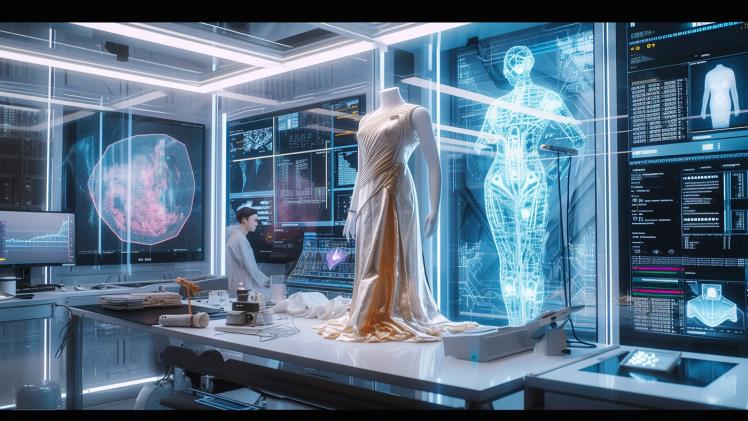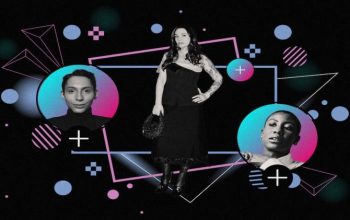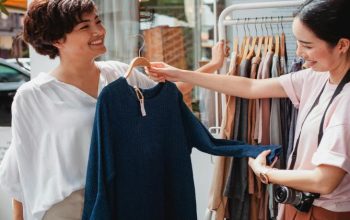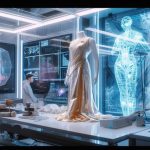Introduction
Artificial Intelligence (AI) is no longer a futuristic concept—it’s transforming industries in real time, and fashion is no exception. From generating design ideas to predicting trends and improving supply chains, AI is reshaping the creative and operational backbone of fashion design. As designers and brands increasingly embrace technology, a new era of fashion is emerging—one that blends art and algorithms.
1. Trend Forecasting with Data-Driven Insights
One of the most significant ways AI influences fashion is through predictive analytics. Traditionally, trend forecasting was a manual and intuitive process, relying on runway shows, influencers, and cultural observation. Now, AI can analyze vast amounts of data—from social media hashtags and online searches to retail purchase patterns—to accurately predict upcoming trends.
Example: Platforms like Heuritech use image recognition and AI to analyze social media content and provide fashion brands with real-time trend forecasts, helping them create collections that resonate with consumers.
2. AI-Generated Fashion Designs
AI can now assist in creating original fashion designs. Using machine learning algorithms, AI tools can analyze existing styles, color palettes, and patterns to generate new and unique garment concepts. This doesn’t mean replacing designers, but rather enhancing creativity by offering fresh perspectives and ideas.
Example: IBM’s collaboration with designer Jason Grech in Australia used IBM Watson to analyze hundreds of thousands of fashion images and customer preferences, inspiring innovative designs for a couture collection.
3. Personalized Fashion Recommendations
Consumers are demanding more personalized experiences, and AI is making it possible. Through the use of recommendation engines, fashion brands can offer customized clothing suggestions based on a customer’s past behavior, preferences, and even body type.
Example: Stitch Fix uses AI algorithms in combination with human stylists to curate fashion boxes tailored to each subscriber’s style and size preferences.
4. Virtual Try-Ons and AI Styling Assistants
AI-powered virtual try-on technology is changing how people shop online. Using augmented reality (AR) and AI, customers can see how clothes look on them without physically trying them on. This not only enhances the online shopping experience but also reduces returns—a major concern in e-commerce.
Example: Zara and H&M have integrated AR mirrors and virtual dressing rooms in some stores, allowing shoppers to preview how clothes will look before making a purchase.
5. Efficient Supply Chain and Inventory Management
AI helps fashion brands streamline supply chains, reduce waste, and improve inventory accuracy. By forecasting demand and identifying purchasing patterns, AI ensures that the right products are manufactured in the right quantities, thus avoiding overproduction and unsold stock.
Example: Fast fashion brands like Zara use AI to analyze sales data across different stores and quickly adapt their inventory decisions, keeping their collections fresh and relevant.
6. Sustainable Fashion Powered by AI
Sustainability is a growing concern in fashion, and AI is playing a crucial role in addressing it. From optimizing production processes to using algorithms to minimize fabric waste, AI helps brands reduce their environmental footprint.
Example: Companies like Optitex offer AI-powered 3D pattern design software that allows designers to simulate and tweak garments digitally before physical production—saving materials and time.
7. Design Democratization through AI Tools
AI tools are empowering independent designers and small fashion startups by giving them access to sophisticated technologies without requiring massive budgets. Open-source AI platforms and affordable design software level the playing field, allowing creativity to flourish regardless of scale.
Example: Tools like RunwayML or Canva’s AI features enable emerging designers to experiment with mood boards, color theory, and textile simulations easily.
8. Challenges and Ethical Considerations
While AI brings efficiency and innovation, it also raises important questions. What happens to the role of human creativity? Could AI lead to homogenized designs? And how do we ensure data privacy when collecting customer information for personalization?
Balancing automation with authenticity is essential. AI should be seen as a tool that augments human creativity rather than replacing it.
9. The Future of AI in Fashion
As AI continues to evolve, its integration with other technologies like blockchain, AR, and the metaverse could open entirely new dimensions in fashion design and retail. Imagine virtual fashion lines, AI-curated fashion shows, or digital garments worn in online spaces.
Fashion will become more interactive, inclusive, and intelligent—thanks in large part to AI.
Conclusion
AI is no longer a back-end tool in the fashion world—it’s stepping into the spotlight as a creative and strategic partner. From forecasting trends and generating designs to enabling virtual try-ons and reducing waste, AI is transforming how fashion is conceived, produced, and consumed. While challenges remain, the fusion of human imagination and machine intelligence promises an exciting and dynamic future for fashion design.
FAQs: How AI is Influencing Fashion Design
1. What role does AI play in fashion design today?
AI assists designers by analyzing trends, generating design concepts, streamlining supply chains, and offering personalized shopping experiences. It enhances creativity and improves efficiency across the fashion industry.
2. Can AI actually create clothing designs?
Yes, AI can generate original fashion designs using machine learning algorithms. It analyzes patterns, colors, and previous designs to suggest new styles. However, human designers still play a critical role in refining and approving final concepts.
3. How does AI help in predicting fashion trends?
AI uses data from social media, e-commerce platforms, and consumer behavior to forecast emerging trends. This allows fashion brands to stay ahead of the curve and produce collections aligned with future demand.
4. Are there any real-world examples of AI-generated fashion?
Yes. IBM collaborated with designer Jason Grech to create a couture collection using AI insights. Similarly, brands like Tommy Hilfiger and The Fabricant have experimented with AI-assisted design processes.
5. What is a virtual try-on, and how does AI make it possible?
Virtual try-ons use augmented reality (AR) and AI to allow customers to see how clothing items would look on them digitally, enhancing the online shopping experience and reducing return rates.
6. How does AI contribute to sustainable fashion?
AI optimizes material use, improves demand forecasting, and reduces overproduction—resulting in less waste and a lower environmental impact. It also enables digital sampling, which cuts down on physical prototypes.
7. Can small or independent designers benefit from AI in fashion?
Absolutely. There are accessible tools like RunwayML, Canva AI features, and 3D design software that allow small designers to leverage AI without large budgets.
8. Will AI replace human fashion designers?
No. AI is a creative assistant, not a replacement. It helps speed up processes and offers new ideas, but human designers bring emotion, cultural context, and storytelling that machines cannot replicate.
9. How is AI used in fashion retail and customer experience?
AI powers recommendation engines, chatbots, and personalized style suggestions. It also analyzes customer data to tailor shopping experiences and marketing strategies.
10. What are the challenges of using AI in fashion design?
Challenges include potential overreliance on data, loss of unique artistic vision, ethical concerns about data privacy, and the need to maintain a balance between automation and human creativity.







